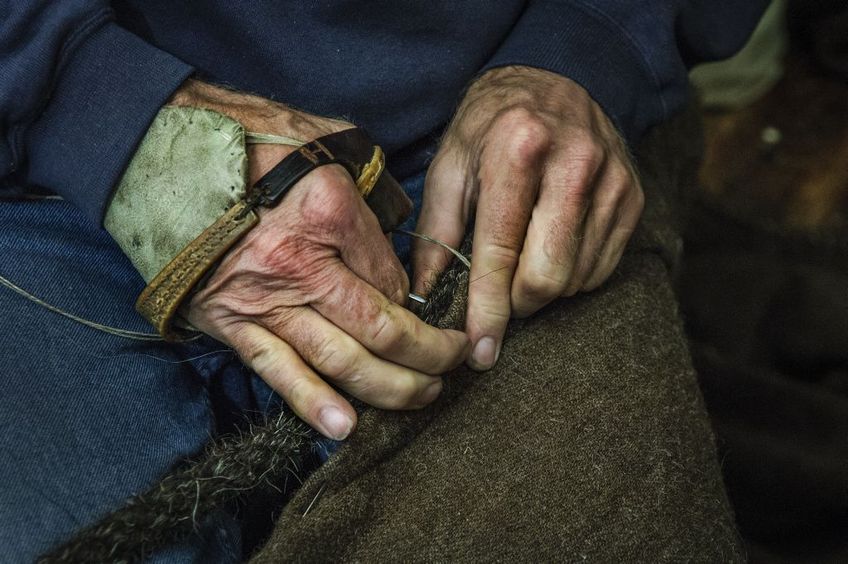
The craftsmen of the ship
Building a Viking ship requires several different craftsmen, each of whom is responsible for an important part of the finished ship. If they do not do their job well enough, it will affect the other craftsmens work.
If the boat builder does not construct he boat properly, neither the weaver's sail, the rope maker's ropes nor the smith's iron nails can save the ship - and vice versa. Everyone is responsible for the results being as good as possible.
All of these crafts belong to what we call intangible research. We do not always know how to make the different materials, but by studying the things that are found and trying them out, the craftsmen find out which methods work and which do not. All the reconstructions that have been made are regularly examined and checked for any errors, so that we can learn more about how and how long the materials last.
The Boatbuilder
The boatbuilder is responsible for all the wood work. They select which trees to use, fell them and process them to fit what their needs.
The weaver
Flax has been used to produce textiles in Scandinavia since the Iron Age. Transforming the plant into fibres that can be spun, and then woven, is a long and complex process.
Blacksmith
Iron is probably not the first material that springs to mind when you think of Viking Age boatbuilding. However, the clinker-built boats and ships of that era were held together using both wooden and iron nails, making the blacksmith’s craft an essential part of the boatbuilding process.
Ropemaker
The craft of ropemaking is an essential part of the boatbuilding process. The rigging is just as crucial an element of the finished vessel as the hull itself, and the ropemaker is a permanent member of the Museum’s boatbuilding team. The ropemaker works year-round to produce rope for the new vessels built at the boatyard and also to maintain and repair the rigging of the Museum’s wider boat collection.